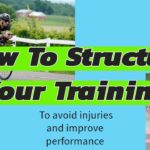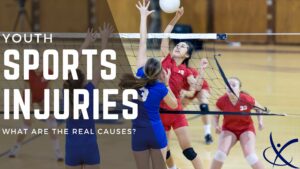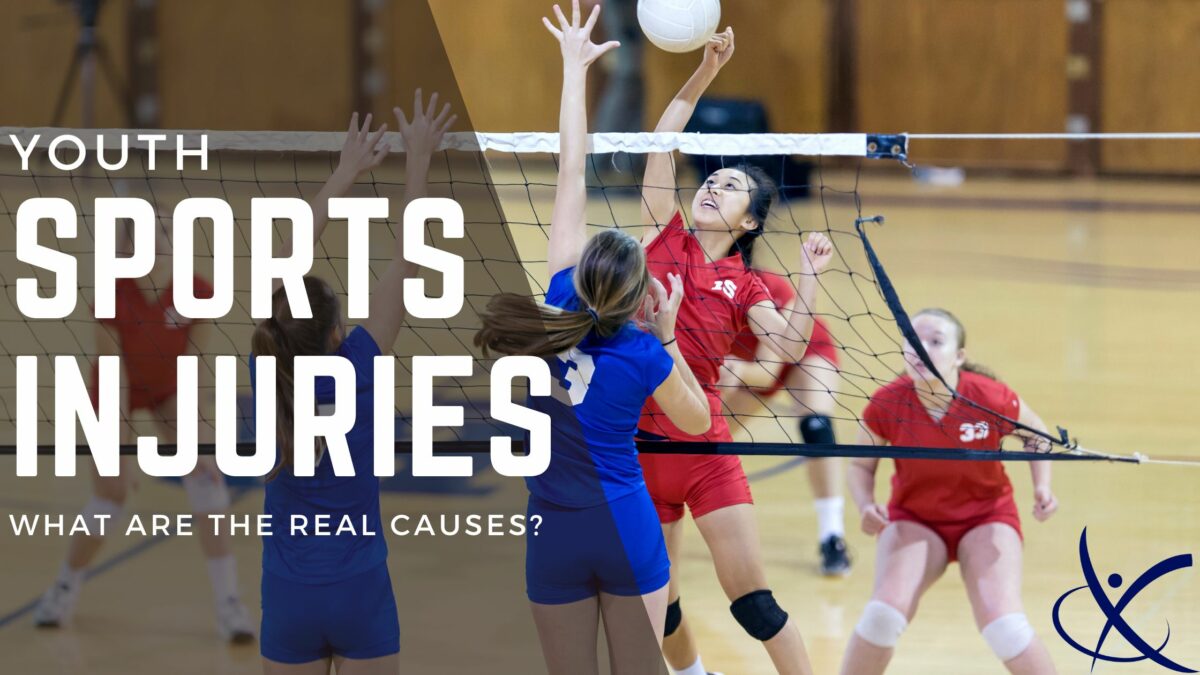
How To Build Your Own Training
November 26, 2023
Decoding the Research Maze: A Comprehensive Guide for Evaluating and Grading Scientific Articles
January 10, 2024Kids and Sports Injuries…It’s not the Turf
 There are few things in life as sure as death and taxes. Unfortunately, youth athletes sustaining sports-related injuries are quickly becoming a sure bet; from the dreaded ACL tear down to “Turf toe” or a sprained ankle. And despite the glaring hurdles these athletes are expected to face we still find ourselves discussing things that are really quite low on the priority list when it comes to addressing athlete health and minimizing their risk of injuries.
There are few things in life as sure as death and taxes. Unfortunately, youth athletes sustaining sports-related injuries are quickly becoming a sure bet; from the dreaded ACL tear down to “Turf toe” or a sprained ankle. And despite the glaring hurdles these athletes are expected to face we still find ourselves discussing things that are really quite low on the priority list when it comes to addressing athlete health and minimizing their risk of injuries.
Multiple times a year I find myself sucked into conversations about artificial turf vs grass and how it relates to injuries. Evidence and research aside, I’d like to take this conversation in a different direction. Let’s reiterate that the best thing we can do for our athletes is mitigate their risks when it comes to competitive sports. The key word is risks. And since people still want to focus on the turf, I’d like to take a moment to shout from the rooftops that:
IT’S NOT THE TURF YOU HAVE TO WORRY ABOUT!
What do I mean by that? Simply put:
Dear parents and coaches, stop worrying about the playing surface and start focusing on the things that actually matter for player health and minimizing the risk of injury. Focusing on the turf is like collecting nickles and dimes when you really want to find the $10’s and $20’s.
Since we can’t control the weather or playing surface, let’s dive into a few things that we have seen plaguing youth athletes for years that are 100% within the control of the athlete, parent, and coach. We call these “modifiable risk factors” and they’re the real deal.
SLEEP IS GOLD
Adequate sleep is needed for growth and repair; it is the time when the body recovers. Human growth hormone is the hormone directly responsible for bone and soft tissue growth/repair and it’s production in the body is highly correlated with Slow Wave Sleep Cycles otherwise known as your “Deep Sleep.” It is widely known that adolescents need 8+ hours of sleep in general just to grow and additional athletic demands only increase the total amount of sleep that a youth athlete requires to not just survive, but thrive.
Increased intensity or volume with practices and competitions pushes the demand needle farther up. Think about that! They need sleep just to recover from being an adolescent and also just to try and grow. Now you want them to play a competitive sport week after week without prioritizing sleep? They’re breaking their body down but not giving it the chance to repair with enough deep sleep and growth hormone production. That’s like putting a race engine in your car but not upgrading the brakes. Good luck.
How often is your athlete getting adequate sleep? How often are they getting compromised sleep? Take special note of busy times in school, staying up late doing homework or late nights due to away games, tournaments, family obligations, etc. If you notice a predictable pattern of compromised sleep or you notice your athlete frequently has multiple nights of poor sleep in a week then it’s not the turf that you should be worried about. Their risk of injury is growing with each night of under-recovery and that should be the priority before they ramp up their sports minutes or sports intensity.
STRESS IS A KILLER
Stress is often at the top of our checklist when athletes present with injuries, especially recurring injuries. Stress is a killer. And it comes in all forms too: Good stress, bad stress, physical stress, mental stress, stress from home, stress from school, stress from boyfriends or girlfriends, stress from being overworked, stress from self-pressure, stress from peer pressure.
When I compare my youth experience to a lot of my patients now I am puzzled. I don’t remember ever being as stressed out as so many of the youth athletes that walk into my clinic. Don’t get me wrong, I don’t think that they’re all red-eyed and tensed up. Well, some are. But this is more like death by a thousand cuts. When we talk and go through our motivational interviewing it is glaringly obvious how many different directions they are being pulled. It is a lot for them to juggle and their sport tends to turn into another source of stress rather than being an outlet.
Stress affects the body and lowers tolerance to handling activity. Think of any time you’ve burnt the midnight oil too often or burned the candle at both ends. It can only go on for so long before it doesn’t end well.
Unfortunately, society hasn’t set up our youth athletes for prime performance. I won’t presume to have all of the answers as they are very much for the athlete and the family to make. But that being said, my advice to you is that if you see your athlete starting to get stressed out or their normal routine is compromised due to unforeseen factors (school projects, family trips, midterm week, death in the family, travel, or even a breakup, etc) then you need to start to pay attention, even more, that week. It’s not going to be the turf that hurts them. It’s going to be the square peg that they’re trying to force into a round hole when they should have actually taken an extra day or two of rest rather than continued to rush around to make every single practice.
Forgive my candor, but sometimes shit happens and you need to respect that. If you notice your athlete seems stressed, or moody, or has changed their normal personality then the stress threshold has already been crossed and they need to back off the gas pedal, period.
STOP REDLINING
The concept of year-round sports is one that is like playing with fire. Trust me, I fully understand the need for consistency in training. But saying “no” to some weeks of practices and competitions is okay. Coaches, I’m talking to you here as well as the parents. Not planning ahead for enough rest days or time off is going to be to the detriment of your athlete.
Nobody ever plans to get injured and no one thinks to take a break when things are going well either. I can promise you that if I had to place blame for an athlete’s injury and my choices are the playing surface or the unrelenting demands of modern athletics, I know who I’m picking in the police lineup and it ain’t the turf!
Consistency of planning is almost as important as the consistency of training. Plan big weeks in the season. Highlight those weeks. Plan for light weeks as well, and more importantly, plan for an athlete to have some weeks off too. Completely off. Youth athletes cannot be compared to professional athletes because their needs are different. And the exception does not prove the rule.
STRENGTH TRAINING
This is one item that we’ve discussed for years. If muscles and tendons are the VIPs then strength training is like giving them armor before going into battle. And practices and competitions are most certainly a battle for the body. Adequate strength training will ultimately lead to less breakdown during a given practice/game and ultimately lead to greater longevity for the tissue in general. We have an expression in the sports medicine world:
“Late in the play, late in the game, late in the season.”
Injuries are more likely to rear their ugly heads when fatigue has set in. Prolonged efforts, second half of competitions, and post-season are all common times for injuries to happen because the body is tapped out and not recovered fully before more demands are placed on it.
Strength training is the most effective way to improve your body’s physical status to be able to handle more demands. This means a greater tolerance to more volume and more intensity. Thicker body armor means you can take more hits. I wouldn’t worry about the next game’s playing surface so much as I would worry about whether you have programmed a solid off-season AND in-season strength plan for the athlete.
So what can you do as a parent or coach?
Forget about the notion of “overuse injuries” and start embracing the concept of an “under-recovered athlete.” Under-recovery of tissue is linked to a greater risk of injury than any playing surface. In the realm of smart choices for an athlete, the decisions surrounding their physical, mental, and emotional well-being are going to matter far, far more than any potential change in playing surface. Recognize when they need time off because they probably won’t realize it themselves.
Do you notice a pattern of recurring injuries, large or small in your athlete? Do you notice they seem tired or stressed for long stretches at a time? Have they been going non-stop in school, life, and sports for a few weeks now without quality time off? If you’re really concerned about your athlete and want to prioritize health then you need to embrace the hierarchy of needs for athletes and you can’t be afraid to make the call for some extra rest or a modified training plan. If you’re not willing to talk to the coach, or if you are unwilling as a coach to allow your athletes a chance to listen to their body then you are the biggest risk to their health.
Regardless of how things are shaping up, the stress will mount, the nights of poor sleep are going to add up, the “no pain no gain” attitude will be their demise, and the unused weight rooms will be filled with missed opportunities.
Please don’t focus on the turf…because if you haven’t prioritized the athlete’s physical and emotional well-being before stepping on the field then you need to look in the mirror, not at the ground.





